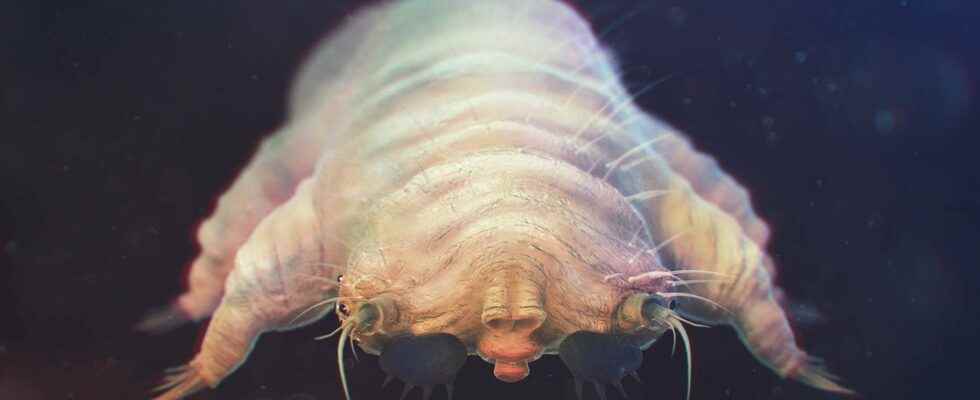We don’t see them. Yet they live with their heads buried in the pores of our face. They are somewhat special mites. Who spend their whole lives with us. So much so, researchers warn us today, that they could come to merge with our skin!
You will also be interested
[EN VIDÉO] A long parasitic worm comes out of the body of this grasshopper Sensitive souls refrain ! These are images that should put off more than one. Nematomorphs parasitize insects when they are in the larval stage. The adults then extract themselves from the body of the insect, which does not survive there, to regain their freedom. An image as disturbing as it is fascinating!
Demodex folliculorum. It’s a small mite very common. Worm shaped. Only 0.3 millimeters long. And it lives… on our skin! In our pores, more precisely. It feeds on the sebum released by our cells. This is also where he mates. On our face. Overnight. Funny little things that University of Reading researchers (UK) went to have a closer look. For the first time, they sequenced their genome.
What they discovered is not very appetizing. According to biologists, these mites began to evolve from the status of parasites external to that of internal symbiont. Understand that Demodex folliculorum is, neither more nor less, than merging with our skin! It already has more cells when young than later in life. A first step on the road to symbiosis, according to the researchers.
Biologists reveal more widely that the way of life of these mites – completely isolated and without competition and without external threats – means that they have gradually lost Genoa. They have thus become extremely simple. Their tiny legs are powered by only three single-celled muscles. They have extra-protruding buccal appendages. And the researchers found only a tiny number of proteins in them. The bare minimum to survive. Much less than all their cousins. All to adapt to an almost entire life – only two weeks, but all the same… – spent in the pores of our skin.
Demodex folliculorumnot that harmful?
It’s because he lost a lot of his genes that Demodex folliculorum lives at night. Because today there is a lack of UV protection from the sun. And that he even lost the gene that causes animals to be usually woken up by the light of the day. In fact, it is also not able to secrete melatonin, a hormone that, in us, regulates sleep. But she helps the little ones invertebrates to move and reproduce. Demodex folliculorum uses the one secreted by our skin at nightfall.
A new study on skin mites which live in our pores revealed the genetic reasons for their behavior including mating on our faces at night. The research on Demodex folliculorum mites shows they’ve shed genes as they move towards becoming at one with humans.https://t.co/QmAdGA0VxEpic.twitter.com/8jf1vXOAk3
—Uni of Reading (@UniofReading) June 22, 2022
Researchers also report that this funny mite must turn into an acrobat to mate. Her reproductive organs, in effect, have moved forward and above her body. The male’s penis protrudes from his back to the top. What pushes the two partners to cling to our hairs to copulate.
Be aware, however, that Demodex folliculorum would ultimately not be to blame for our skin conditions. Researchers have long believed this because they thought the mite lackedanus. And therefore had to store his excrement throughout his life. To release them all at once when he dies. Causing a inflammation of our skin. On the contrary, biologists now believe that the long history that exists between Demodex folliculorum and humans suggests it could play a beneficial role for us. Why not simply the role of pore cleaner?
Interested in what you just read?
